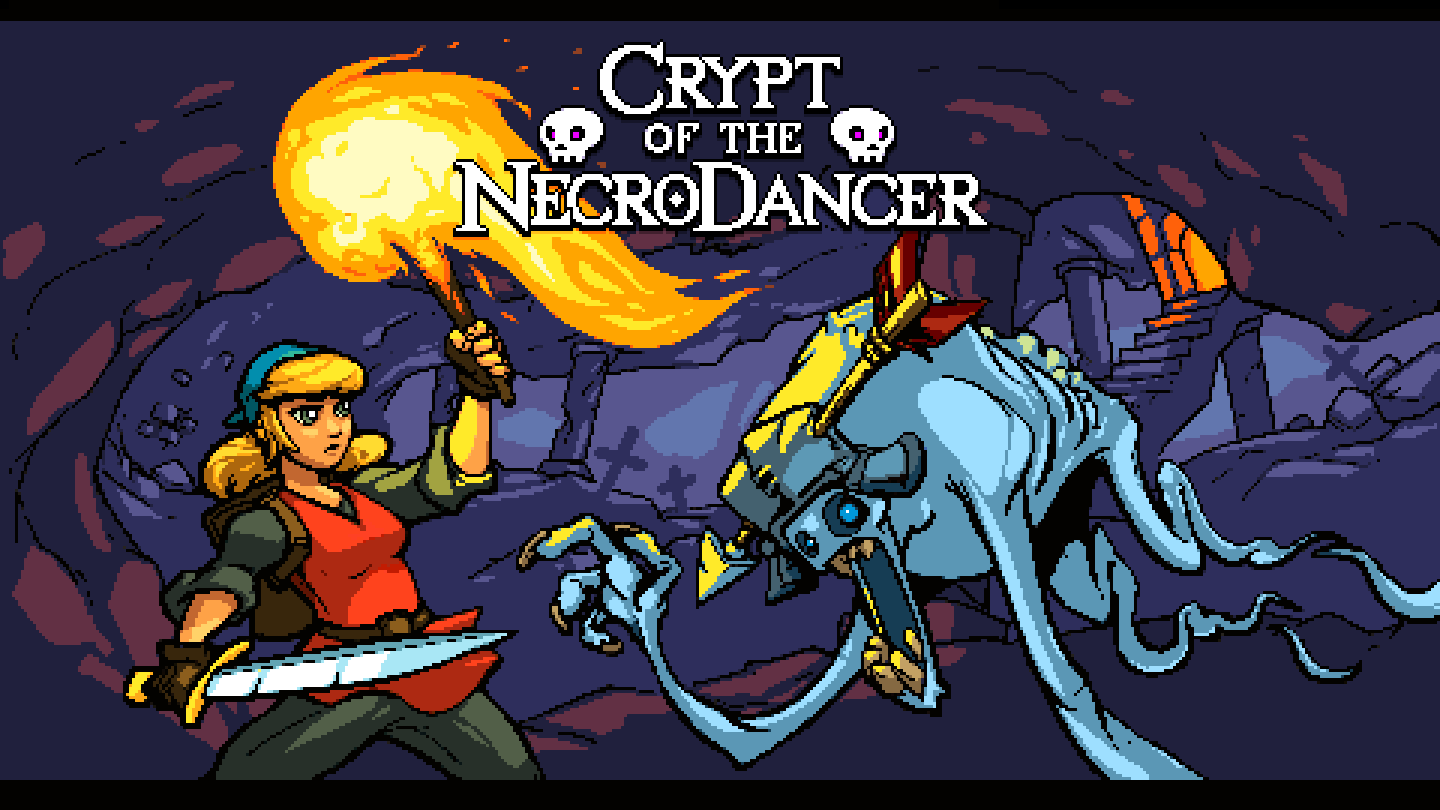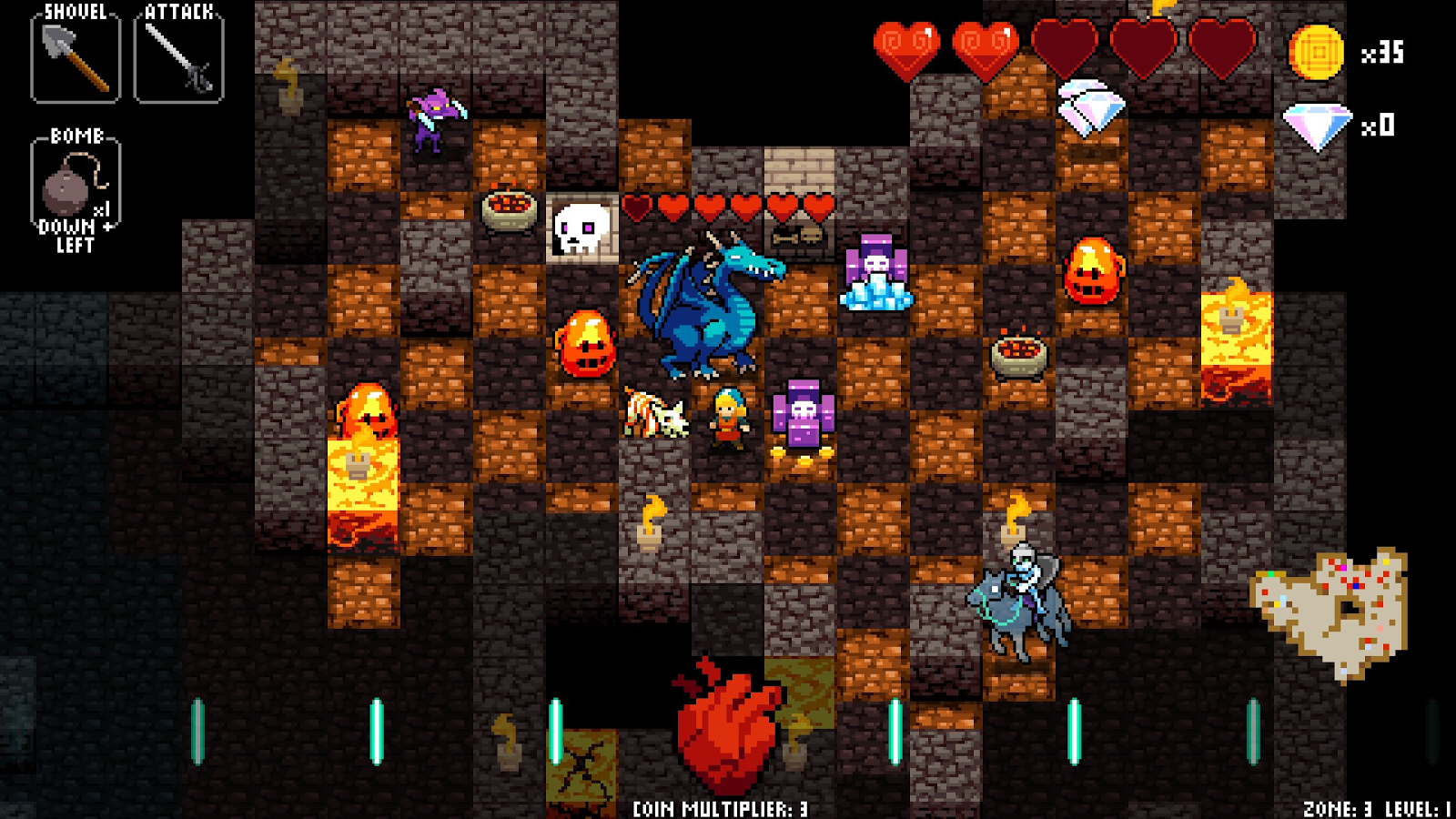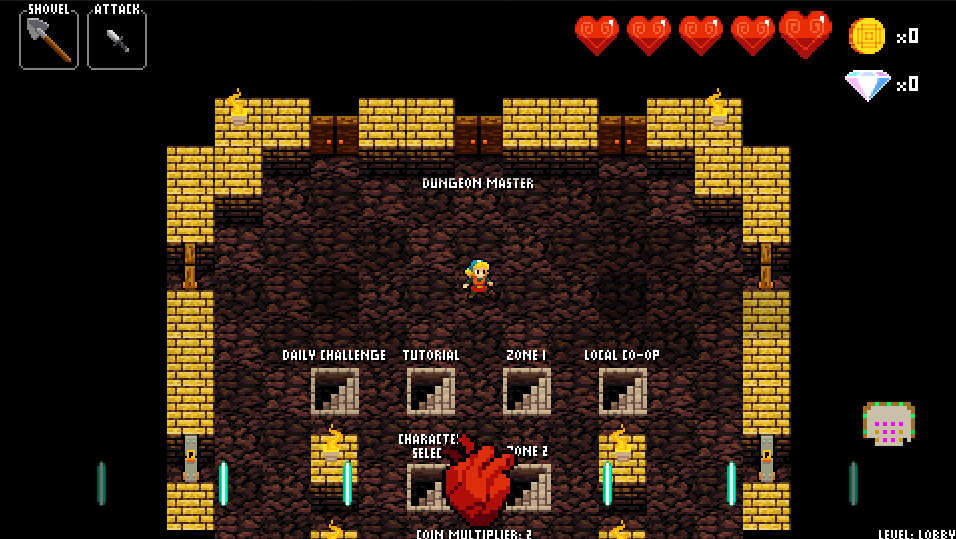Crypt of the Necrodancer
Article by: Danny Pratt
Hey everyone! Welcome to this week’s edition of Indie Innovation. For this week, I decided to take a look at Crypt of the NecroDancer, a roguelike exploration game. Developed and published by Brace Yourself Games, with the infectious soundtrack written by Danny Baranowsky, Crypt of the NecroDancer mixes various genres of games to create a rhythm-based dungeon crawler that is just as infectious to play as it is to listen to.

First and foremost, the music in this game needs to be addressed. I don’t think I have ever genuinely gotten this physically involved with a game’s music before playing Crypt. If my head wasn’t bobbing, my foot was legitimately tapping on almost every beat while playing this game. Having a music-based mechanic seems to be a relic of Dance Dance Revolution days, but the fresh and innovative sounds in this game help to revitalize the otherwise stale feature. Moving your character based on the bass drops and synth beats becomes a contagious experience. Upon every death, you’ll be hard pressed not to immediately jump back in the game, if even to just hear one more loop of the EDM-influenced tracks.

Speaking of death, you will die. Again. And Again. And Again. However, that’s not necessarily a bad thing. All monsters and enemies move based on the beats. This creates an atmosphere where when an enemy gets the best of you, it doesn’t feel like you got cheated by the game. Rather, it’s a learning experience which will potentially make players look forward to meeting that enemy type in the future so they can try a new tactic. This also forces some players to adopt the seemingly strange habit of intentionally running into walls. In Crypt of the NecroDancer, you are able to dig through the walls if they are dirt. If they are stone however, you cannot move through them unless you have a powered up shovel item. These count as a beats, which can help to create clever loopholes that players can exploit. This ‘wall strategy’ developed into a more refined strategy as I got deeper into the game. It really helped me to feel like there was more ways to outsmart foes other than just randomly dancing around.

Along with the endless audio cues, the visuals in the game also foster this spirit of rhythm. Whether it’s the player’s health at the top of the screen that pulses to the beat, or the entire floor that changes in color to match the tunes, the visual cues are unmistakable. Coupled with the audio cues, they create a system that really feels groovy when you do things right. This amps up the difficulty however, causing even the most well trained in hand-eye coordination to occasionally get overstimulated and make an error. The monsters also have movements such as raising their arms, meant to help players establish what their next move will be. This really drives home the idea that every mistake I made was completely on me and my knowledge of enemy move sets.
Like most roguelike games, there are plenty of pickups and items to keep players coming back for more. It feels great to find an awesome weapon that lets you attack from 2 spaces away, or some armor that can help when you make a rhythm error. Every enemy, based on its difficulty, drops a certain amount of gold coins. This gold can be multiplied if you keep your character moving, thus raising a coin multiplier. If you find a merchant in the level, you can spend your hard-danced gold on a selection of 3 random items. These range from items that give you certain buffs like enhanced movement speed, to food that can give you more health in a time of need. Even more valuable than gold coins are the diamonds. Eagle-eyed gamers may recognize certain glittery wall tiles that are mineable, scattered throughout the level. These diamonds are the only currency you can take back to the main hub area, where you can spend them on various permanent changes. For instance, there is a trader in the hub area that lets you upgrade things such as max health or the rate the coin multiplier gives you.

From an outsider’s perspective, Crypt of the NecroDancer may seem like an overly complicated rhythm puzzle. However, it’s very mathematical in nature and once you figure out the moves, it becomes more manageable. It isn’t necessarily an easy game, but the genius merge of both roguelike dungeon crawlers and beat-based movement creates an enticing experience. While very chaotic, the logic behind the locked movements creates an atmosphere that I don’t think I’m ready to leave behind just yet.
